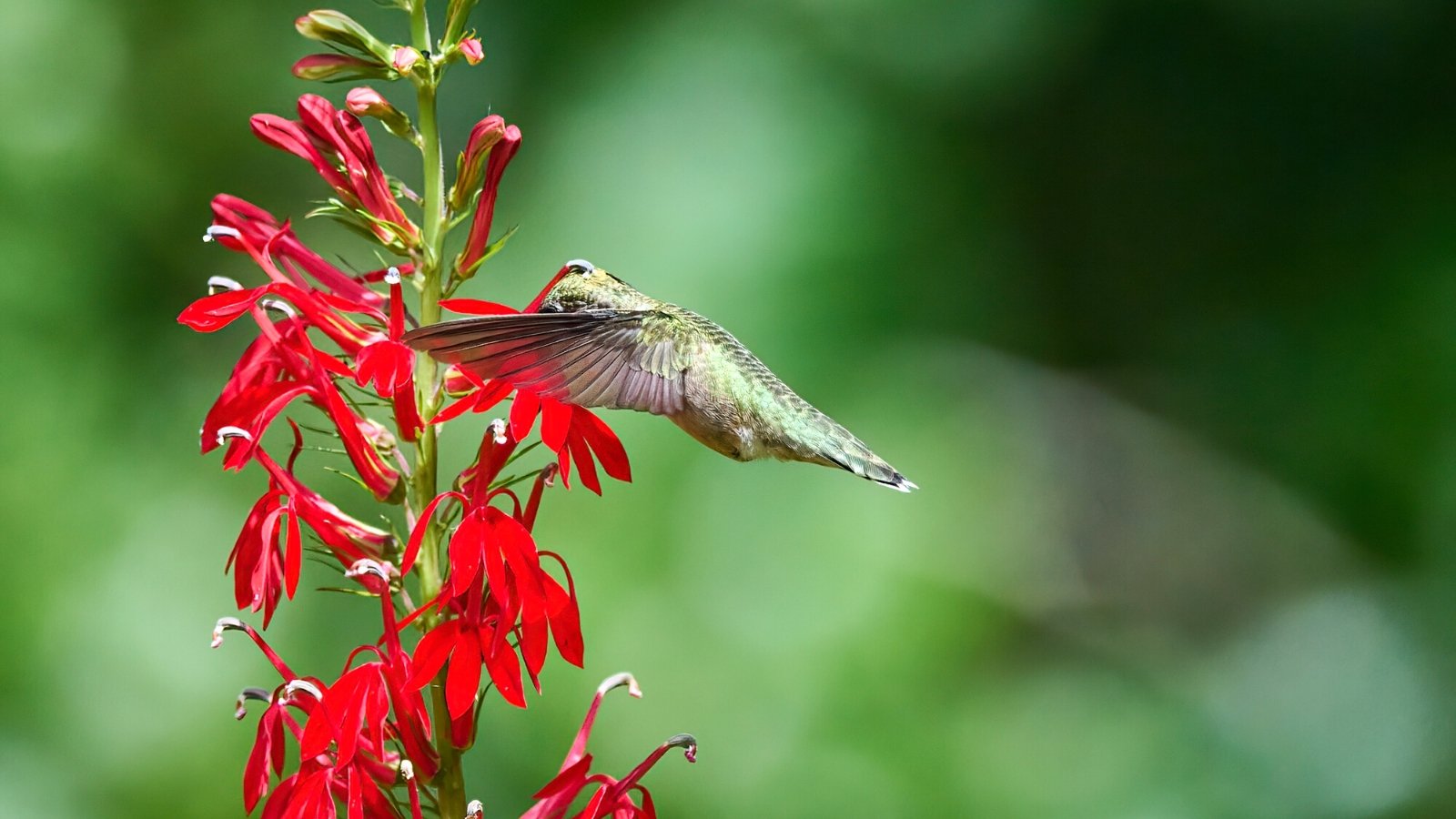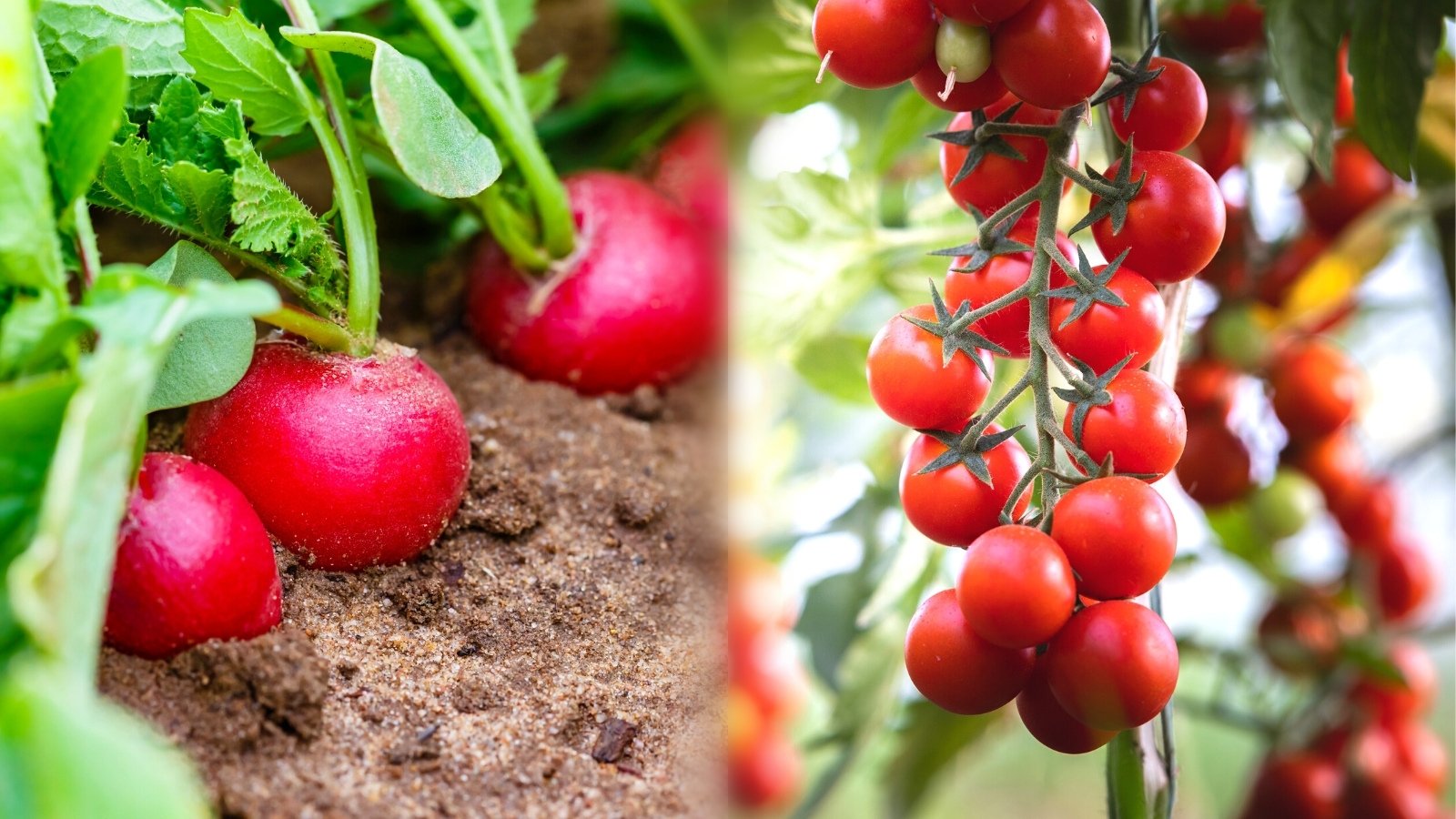Companion planting is my new normal in the vegetable garden. I love experimenting and finding beneficial buddies for my plants. With companion planting, you can utilize your garden space efficiently, increase biodiversity and repel pests and diseases.
By maximizing your space, you can grow a lot of food in a small space! Since growing tomatoes is one of the most common plants for beginners, we want to cover all the basics for tomato companion plants!
Tomato plants are very rewarding crops to grow, yet sometimes they face garden pests and diseases. Insects like hornworms, aphids, and spider mites are attracted to the tomato plant and can limit your harvest. Diseases like nematodes can also be detrimental to this common garden staple. Fortunately, there are companions that can keep these pests away and enhance the growth of your produce.
Companion planting is an interesting topic. Some swear by it, while others do not have good luck with it. I have had my share of successes and flops with companion planting but I am enjoying the awareness I am gaining from observing these relationships in my vegetable garden.
If this is your first time doing companion planting, start with just one or two companion plants and integrate them into your garden. If you are eager like me, you can try multiple combinations but be sure to thin the seedlings to limit overcrowding.
I love to have themes in my garden, which integrates perfectly with companion planting. Right now, my favorite theme is a pizza garden. Vegetables like tomatoes, garlic, basil, onions, and oregano are all classic flavors to put in a homemade pizza and they grow nicely together. You cannot beat homegrown flavors! Other noteworthy combinations to consider are marigolds, parsley, borage, lettuce, or beans.
Companion planting is amazing because it limits my need for pesticides or added fertilizers and reinforces organic practices. Effective companion plants bring in beneficial insects and pollinators, enhance the growth of tomatoes, repel insects like aphids, and can complement an ideal growing environment.
What Is Companion Planting?

Companion planting is growing two or more plants together in your garden that have beneficial relationships and increase crop harvest. This is different from traditional farming or gardening practices of monocropping, which cultivates one type of crop.
There are downsides to having just one type of plant in your garden. With so many of the same crops around, it makes them more vulnerable to large infestations and the quick spread of diseases. For instance, when tomatoes are planted in a garden bed by themselves, their natural fragrance will entice tomato-loving bugs like hornworms. When there are companions with the tomato plants, some fragrant friends such as basil, garlic, or onions can mask the smell of tomato and make them more difficult for pests to locate.
Good plant neighbors can repel garden problems like aphids or act as a trap crop by luring insects away from your prized crops. Some companion plants like flowers attract beneficial insects to help manage pest problems. For instance, yarrow entices in lacewings, and lacewings will happily consume the aphids. Yarrow is also an excellent plant for luring in bees for better pollination.
A great technique occupies different canopies or vertical layers of the garden space. For example, lettuce is an excellent understory plant, as the lettuce will happily grow in the partial shade created by the tomato plants. Beets occupy the space around the roots. Peas are climbers with their vines and will happily grow alongside (or even through) the tomatoes, and sunflowers are often tall enough to get plenty of light behind the other plants, although you don’t want them to block the sun. Since these plants grow in distinct spaces, they will not be competing for space or sunlight. Intercropping between your tomato plants can maximize your garden space and double your harvest. This is favorable for gardeners who are limited on space and want to utilize their resources wisely, but be careful to ensure everything has plenty of airflow around it!
Low-lying companion planting can help create a microclimate by providing a living ground cover to provide shade to the soil or plants in your garden. This regulates soil temperature and minimizes water evaporation. Additionally, ground covers can suppress weeds that compete for nutrients. Consider squash in your vegetable garden as a ground cover. The broad low-lying leaves protect soil and plants from drying out.
Other companion plants can improve the health and flavor of those around them. For example, plants in the legume family, like beans or peas, are nitrogen fixers, and can naturally supply these nutrient needs for a healthy harvest. Besides nourishing the soil, some companion plants such as root crops help break up the soil.
Companion planting also improves soil quality by stabilizing soil. The roots hold down the topsoil and protect tomato roots from being exposed. Topsoil can be washed away from rainstorms or even energetic watering. A practical companion plant can guard the tomatoes against losing soil and precious nutrients.
Tall plants provide support or shade to other plants. This can depend on the tomato variety you are cultivating. Some tomato plants are tall and can be a sturdy support for climbing vine companion plants. A tall companion plant like corn could provide a natural trellis for tomatoes to climb up, but you’d need to make sure that the corn can support the weight of the tomato plant and reinforce if necessary.
Fast-growing plants can be used as row markers for slower-growing varieties. This is helpful so that you do not accidentally double plant an area!
Companion planting can be done in a container, raised garden bed, or straight into the ground. Just make sure to have adequate space between your plants for decent airflow.
Good Tomato Companion Plants

Now let’s get started on which plants to grow with tomatoes in your garden! Aromatics and fragrant herbs such as thyme, basil, parsley, sage, and oregano can help disguise tomatoes from insect pests like whiteflies or hornworms while attracting pollinators like bees and predatory insects like ladybugs. Additionally, not only do these herbs complement tomatoes in a culinary dish but in the garden, they can enhance the flavor of tomatoes and boost plant growth.
Other flavorful companion plants for tomatoes include mint, celery, borage, and cilantro. Borage repels pesky tomato hornworms and the wide leaves provide shade to the soil. Keep in mind, some tomato companion plants may not be good neighbors to each other. For example, mint and parsley are good tomato companions but they should not be planted next to each other in the garden.
I love to sneak flowers into my vegetable garden for a splash of color. Not only do they attract pollinators but they can provide added protection to your tomato plants. Sunflowers, nasturtium, and cosmos lure aphids away when planted close to tomatoes and attract beneficial insects. Calendula and tansies repel ravenous pest species such as tomato hornworms. Other flowers to consider for pest control are violas, lavender, bee balm, echinacea, red clover, sweet alyssum, borage, and amaranth. The vibrant amaranth flowers can attract beetles that eat the pest species that prey on tomatoes. French marigolds are excellent for soil health by impeding root parasites and root-knot nematodes that can hinder the growth of tomato plants.
Living mulches like crimson clover limit weed germination and naturally cultivate nitrogen in the soil to fertilize the tomatoes in your garden. Instead of applying nitrogen fertilizer for the tomatoes, try crimson clover when overwintering. Other plants such as beans or legumes are a companion plant for tomatoes, as beans or other legumes absorb nitrogen from the air and put it back in the soil. Needless to say, having beans close by can really improve the fertility of the soil!
Other ground covers include vining plants such as sweet potatoes, squash, and cucumbers. The sprawling leaves can shade the soil and prevent soil from splashing up onto the tomato plants. Squash and tomatoes make great companions because they thrive in the same growing conditions.
Cool-season vegetables like lettuce, radishes, beets, parsnips, and carrots flourish in the cool shade of the tomato plants and can help with weed management. These cool-season companion plants inspire me to cultivate a salad garden bed with carrots, lettuce, cherry tomatoes, marigolds, and a complimentary herb. Radish can make an excellent tomato companion due to their complimentary planting benefits.
One more thing! Spinach is a common cool-season crop and a heavy nitrogen feeder, so if you use this as a companion plant, consider planting a nitrogen fixer like bush beans to supplement the tomato’s nitrogen requirements.
Crops in the allium family such as garlic, leeks, shallots, chives, and onions make some of the best tomato companion plants. Their strong aroma has a pesticide effect and repels insects such as spider mites, aphids, and other garden pests. I love growing garlic, tomatoes, and basil together. These flavors complement many of my dishes and grow so well together!
The stocky build of bush beans can provide shade while fixing nitrogen into the soil around the tomato plants. Cowpeas are also nitrogen fixers but are best planted near, not among tomato plants. They act as a trap crop by drawing pests like stink beetles away from tomatoes.
Planting tomatoes with asparagus is beneficial to both crops in your vegetable garden. Tomatoes repel asparagus beetles, while asparagus will deter root-knot nematodes. After the first couple of years, the asparagus roots will begin to dominate the garden bed and you’ll need to plan a new home for the tomato plants.
What Not To Plant With Tomatoes

There are a few plants that do not grow well with tomatoes. These plants can be bullies by stunting tomato growth and may draw in garden pests and diseases. You will want to keep plenty of space in your garden between these plants and tomatoes.
The tomato is in the nightshade family. As a result, it is not recommended to plant other members of the nightshade family near tomatoes. They will compete for similar nutrients in the soil, and are vulnerable to the same diseases and pests. This includes vegetables like peppers, eggplants, and potatoes.
Brassicas are poor companions for tomatoes, as they impede the growth and health of the tomato plants. Cabbage or Napa cabbage, kale, broccoli, Brussels sprouts, kohlrabi, rutabaga, and cauliflower are all brassicas. These large plants often compete for soil nutrition, but more importantly, they will take up the space needed for good tomato growth.
Other crops to avoid are walnut trees, dill, and fennel. Walnut trees, particularly black walnut, produce chemicals in the soil that can retard plant growth. Similarly, dill and fennel may slow the growth of your tomatoes. Interestingly, dill and fennel are in the same family as carrots, yet carrots are great companion plants for tomatoes whereas dill and fennel are not. Strawberries should also be avoided in tomato companion planting.
Frequently Asked Questions

Q: Can you plant zucchini and tomatoes together?
A: Yes you can! Zucchini is one of the best tomato companion plants. Not only do they thrive in the same growing conditions but the giant leaves of the squash plants provide a ground cover. Additionally, zucchini attracts beneficial insects such as bees to help pollinate tomatoes in your garden.
Q: Can you grow strawberries and tomatoes together?
A: No, strawberries and tomatoes are not good companion plants. If planted close together in the garden, they are more susceptible to disease. Make sure to have plenty of space between these plants!














